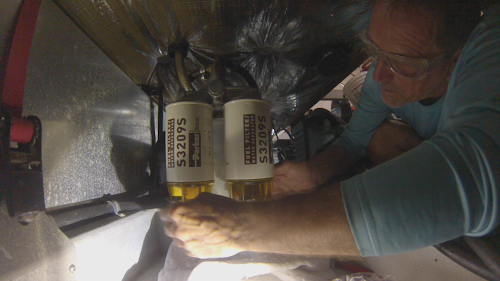The Importance of Clean Fuel

More from the exciting world of Marine Diesel Maintenance! For a diesel not many things can be more important than clean fuel. To start my own timeline, my next project was to change out the fuel filters. My Camano has 2 primary filters a RACOR 75/B32009 (2 MICRON) and a secondary on engine (10 MICRON) fuel filter. Not sure why the 2 primaries are 2 Micron, that is what was on there when we purchased it. Usually the primary is a larger Micron, but for now I left it the way I found it. I started with the secondary and used a NAPA substitute that fit fine. The NAPA unlike the VOLVO has a small water drain at the bottom. Not sure I would use that, If I thought water had gotten to there, I would see it in the primary RACORs first. Water like crud is death to the engine! If I really wanted to delve into how dirty the filter was, I could have cut it open but frankly that's a PIA. It took just a few minutes to remove the existing filter, fill the new one with clean fuel,

